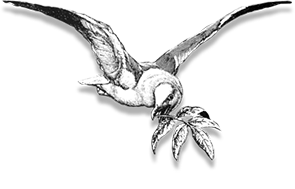Soviet Space Dogs
If you are not currently a member, we invite you to join or renew your membership online.
Text (in English) by Olesya Turkina
Edited by Damon Murray and Stephen Sorrell
The Museum of Jurassic Technology is delighted to offer this new and exceedingly handsome volume on the heroic and beloved dogs of the Soviet space program. Written and extensively researched by MJT colleague, collaborator and dear friend Dr. Olesya Turkina, Senior Research Fellow at the State Russian Museum, St. Petersburg, and faculty member at St. Petersburg State University, this book is, to our knowledge, the most comprehensive title yet published in the United States on the subject -- and certainly the most beautiful. Hardbound with gold foil embellishments on the cover, nearly every page of this lavishly illustrated book includes full-color images of the rich and varied ephemera (from cigarette packets to sweet wrappers and children's toys) produced in Russia and abroad to commemorate the noble dogs.
These homeless dogs, plucked from the streets of Moscow, were selected because they fitted the space program's criteria: weighing no more than 15 pounds, measuring no more than 14 inches in length, robust, photogenic and with a calm temperament. These characteristics enabled the dogs to withstand the extensive training that was needed to prepare them for suborbital, then for orbital, space fights. On 3 November 1957, the dog Laika was the first Earth-born creature to enter space, making her instantly famous around the world. She did not return. Her death, a few hours after launching, transformed her into a legendary symbol of sacrifice. Two further strays, Belka and Strelka, were the first beings to make it back from space, and were swiftly immortalized in children's books and cartoons. Images of the Space Dogs proliferated, reproduced on everyday goods across the Soviet Union: cigarette packets, tins of sweets, badges, stamps and postcards all bore their likenesses. Soviet Space Dogs uses these unique items to illustrate the story (in fact and fiction) of how they became fairytale idols. The first book to document these items, it contains more than 350 images, almost all of which are previously unpublished, and many of which have never been seen before outside Russia.
Information about the Museum of Jurassic Technology exhibit, Lives of Perfect Creatures: Dogs of the Soviet Space Program, can be found on the Museum's main website, here.
Fuel Publishing, 2014, hardcover, 8 x 5-inches, 240 pages, 350 color illustrations.









